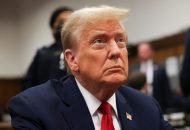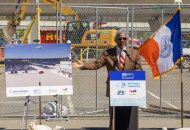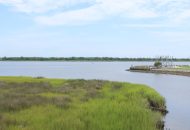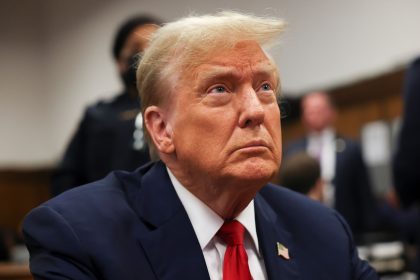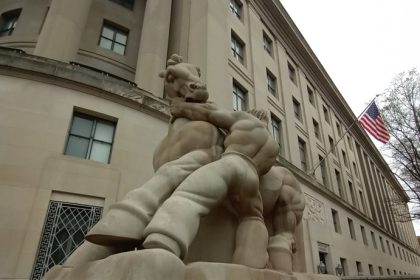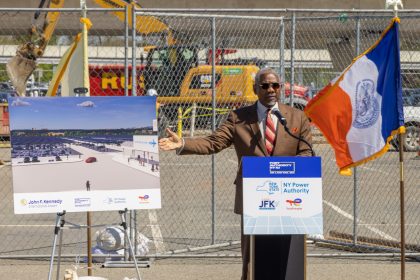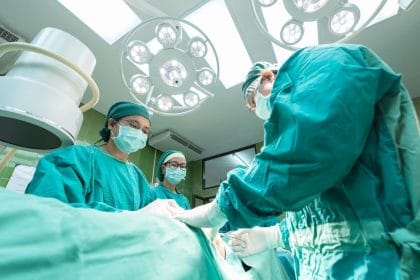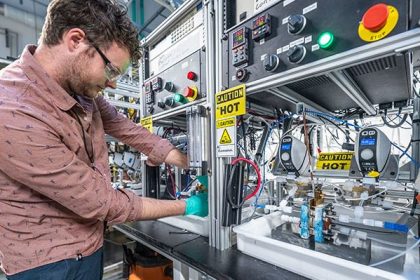COVID-19 Curbs Community Policing at a Time of Diminishing Trust
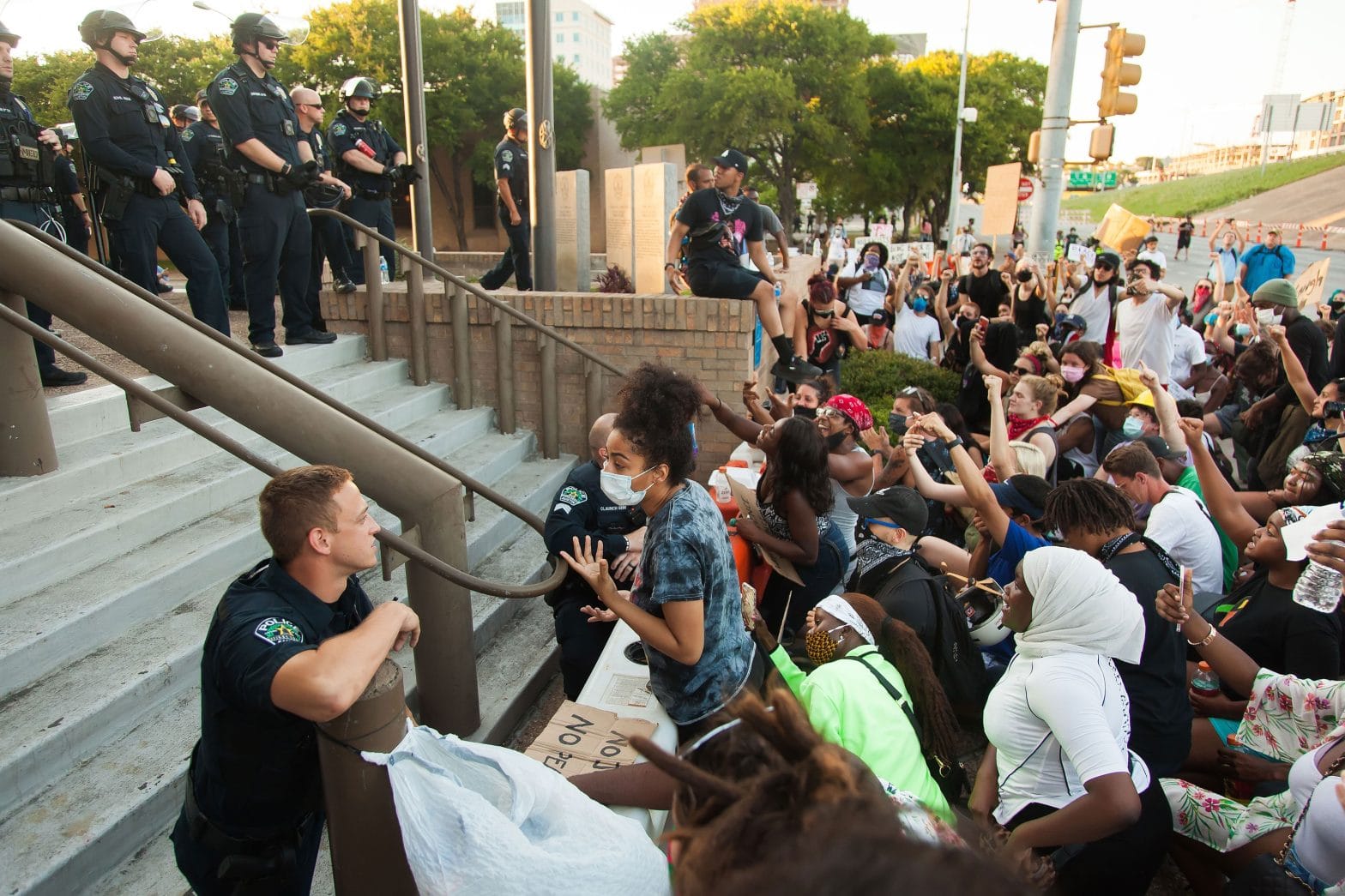
AUSTIN, Texas — The funeral last month for Jorge Cabrera featured familiar tributes to a fallen officer. Cabrera’s flag-draped coffin sat at the front of the church, near a large replica of a police badge with black ribbon. The strains of a bagpipe accompanied the entry of a uniformed honor guard.
Cabrera was a ubiquitous figure in his hometown of Mission, Texas, serving a dozen years as a police patrol officer and traffic investigator in the border town of 85,000. Hundreds paid their respects in person or watched his funeral online as eulogists praised his service to the community.
The 42-year-old Cabrera didn’t die in a crash or a shootout; he succumbed to COVID-19 on Aug. 24, after a 21-day struggle against the virus. Mission Police Chief Robert Dominguez said Cabrera may have been infected while escorting a prisoner.
In the seven months since the start of the pandemic, COVID-19 has emerged as the nation’s deadliest police killer, felling far more officers than violence or accidents. It also has changed the way police do their jobs, and hampered trust-building measures at a time when many people have taken to the streets to condemn police brutality and racism.
“Given the current climate, community policing is even more important because it allows law enforcement to not have all their hours on the job devoted just to ‘crime-fighting,’” said Wesley G. Jennings, a professor of criminal justice and legal studies at the University of Mississippi. “It allows them to get in the community, engage with the community.”
But because of restrictions imposed by the pandemic, Jennings said, “regularly scheduled activities where the police and the community would interact … are not occurring.”
In Washington, D.C., for example, community leaders and police officers concede that COVID-19 safeguards have slowed or impeded bridge-building activities in the Sixth District, an area that includes parts of the Northeast and Southeast quadrants of the city. The area, comprised of single-family detached and row houses, along with a significant number of public housing projects, is predominantly Black.
“Community policing is definitely affected by COVID-19 because of the inability to have face-to-face contact,” said the Rev. Dr. Lewis Tait Jr., minister of The Village, a church 5 miles east of the U.S. Capitol that was founded by Tait’s father 60 years ago. “Whether you’re the police, or the public that you’re dealing with, everybody is just a little bit anxious in terms of how you deal with them.”
Before the pandemic, police officers convened at least monthly with clergy and neighborhood community leaders, typically over breakfast. Since April, the meetings have been conducted via Zoom, which allows participants to talk but prevents the personal contact that helped them build real relationships.
“Sometimes you want to have that candid conversation with them,” said Officer Jason Medina, the police department’s community outreach coordinator for the Sixth District. “You want to be able to look them in the eye and tell them that everything’s going to be okay. And by not being able to do that, it’s kind of harder.”
The pandemic also has changed policing in other ways. Some departments are declining to make arrests for minor crimes, restricting public access to police stations, allowing some officers and civilian employees to work from home and collecting crime reports via phone or email instead of sending officers to the field.
“You can’t have a global pandemic like this and things not change,” said Assistant Chief Joseph Chacon of the Austin Police Department, describing the litany of safeguards Austin officers routinely incorporate into their daily routine, from face masks and social distancing to applying “a ton of hand sanitizer” to their work stations and squad cars.
“It’s our new normal and it sounds like it will be for some time to come.”
Dallas Police Sgt. Mike Mata, president of the Dallas Police Association, said the changes have added barriers between officers and residents, at a time when street encounters are more likely to be fraught.
“You don’t want to be just a report writer and grab the facts,” Mata said. “You want to be attentive to the citizen, and that’s a great part of community policing.”
“But dealing with COVID right now, we’re not able to sit around that kitchen table or living room and have those discussions with family members.”
In Houston, officers posted at the department doors take temperatures of arriving employees. Those with fevers are denied entry and required to get tested immediately. Officers and employees don full PPE — masks, goggles and gloves — when they meet somebody on a call and are required to keep their masks on inside headquarters, unless they’re in their own space.
Residents in many cities have reported bare-faced officers in their neighborhoods — despite policies requiring masks — and participants in racial justice protests have lodged similar complaints, according to The New York Times and other news outlets.
But Medina of the Washington, D.C., police and several other officers said in interviews that they always wear masks to protect themselves, the public and their families.
In Yonkers, New York, a northern suburb of New York City, Police Commissioner John Mueller said his officers don masks when they interact with residents but may not when in the field riding in a squad car.
“We try to our best to encourage this, to make sure that everybody wears them,” he said in a recent telephone interview, “but we can’t be everywhere they are at all times.”
In Texas, the blazing heat dissuades some officers from following mask protocols. “Asking them to put something over their face — it’s restrictive; it makes it harder to breathe,” Chacon of the Austin Police Department said. “But they’ve got to do it. They’ve got to set the example and they’ve got to keep themselves and the public safe.”
Despite the precautions, police departments have reported hundreds of positive cases, and many officers have died.
Estimates of the total death toll vary, but the Fraternal Order of Police attributes at least 235 law enforcement deaths to COVID-19 based on media reports, with the numbers reaching into the double digits in at least eight states. The states with the highest numbers of coronavirus-related law enforcement deaths as of Sept. 30 were Texas (51), New York (35) and Louisiana (20), according to the organization.
The Officer Down Memorial Page Inc., a nonprofit organization that honors fallen officers, reports that 114 of the 208 line-of-duty deaths it has confirmed this year were caused by the virus, more than all other categories combined. The next largest category was gunfire, with 35 cases.
Jessica Rushing, the group’s communications director, said line-of-duty deaths increased by 90% this year compared with last year, and the spike was caused almost entirely by COVID-19. She said the final count is likely to exceed 200, once the group has reviewed 150 additional COVID-19 deaths to determine whether officers contracted the virus while working.
To be sure, COVID-19 has taken a much heavier toll on health care workers. A database compiled by The Guardian and Kaiser Health News suggests that more than 1,200 health care workers have died from the virus.
The pandemic has had a less deadly impact on firefighters and emergency medical service personnel, even though they are often the first to have contact with COVID-19 patients. According to the International Association of Fire Fighters, at least 26,000 of their members have been exposed to the virus, and 17 have died.
Officer Rosie Perez, a 41-year-old community liaison with the Austin Police Department, tested positive for the virus in early June after 12 days of virtually nonstop work including during protests in downtown Austin. She said she tried to abide by anti-coronavirus protocols but “it didn’t slow down the fact that we still had a job to do.”
After recovering and returning to work, she talked openly about the ordeal with fellow officers and urged them to get tested.
In mid-April, Marvin Wayne Trejo, police chief of the Texas Panhandle town of Dumas, came home from work and told his wife of 22 years he was feeling “a little under the weather.” Twenty-four days later, Lisa Trejo was at her husband’s side in the hospital, holding his hand during the last hour of his life. It was May 10 — Mother’s Day.
Trejo said she is unsure how her husband contracted the disease but noted that, at the time he became ill, the Dumas area was experiencing a fierce outbreak partly linked to a nearby meatpacking plant.
The surge of infections throughout prisons and jails has made corrections officers particularly vulnerable. Nearly 21,700 inmates and 4,800 staff have tested positive in the Texas prison system. The virus has claimed the lives of 161 inmates and 20 employees, including Akbar Nurid-Din Shabazz, the first Muslim chaplain in the Texas Department of Criminal Justice, who died in April.
As of Sept. 18, the Houston Police Department had a total of 450 positive cases among officers. No officers have died, but the department lost two long-time civilian employees: Nicole Rodriguez, 38, and Latonya Lewis, 36.
Given the heightened challenges facing law enforcement and the lurking threat of a fatal disease, Houston police’s Assistant Chief Sheryl Victorian said maintaining morale has been a pressing concern. Houston officers are frequently reminded about the availability of counseling, peer support and other support services, Victorian said, because “2020 has really been a tough year.”
———
©2020 Stateline.org
Distributed by Tribune Content Agency, LLC.









